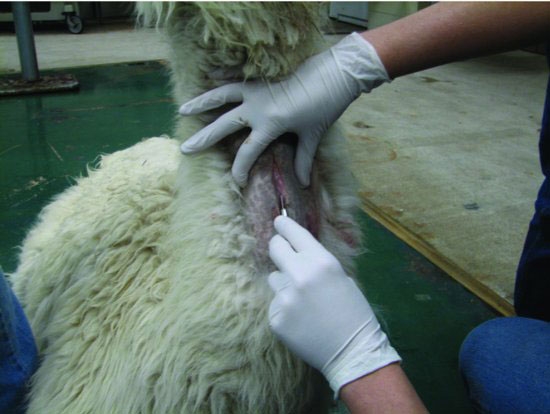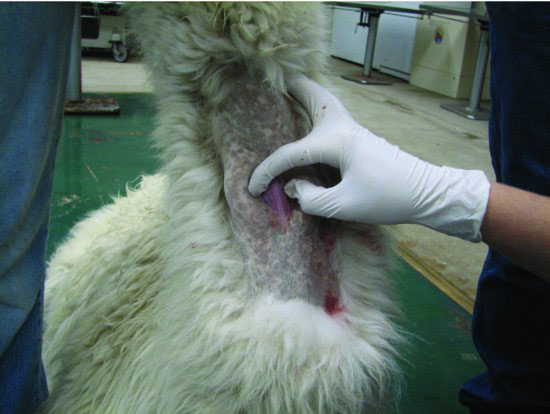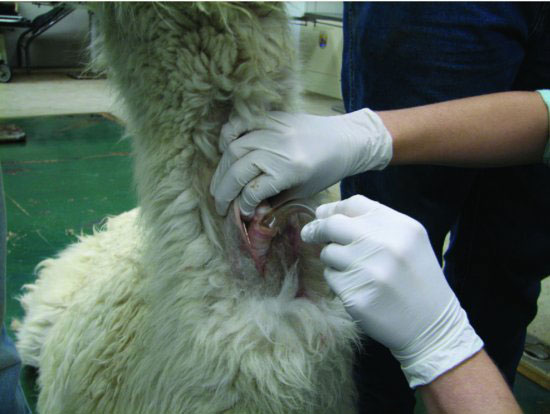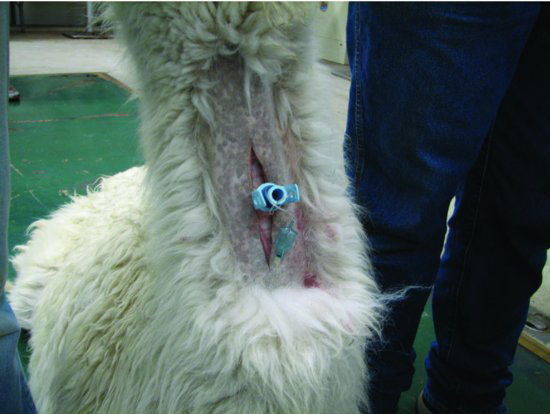Figure 33.2 Sharp dissection is used to continue the incision to the cervical musculature. Make the incision sufficient to easily visualize and grasp the trachea.

Figure 33.3 The paired sternohyoideous and sternothyroideus muscles should be separated along the median raphe if possible to avoid excessive muscle trauma and subsequent inflammation.

Figure 33.4 Sufficient length of incision has allowed the clinician to grasp and support the trachea for incision between the annular ligament and insertion of the tracheotomy tube. Avoid incising more than one-third to one-half the circumference of the annular ligament to reduce the chance of tracheal collapse.

Grasp the trachea and make a sharp stab incision between two tracheal rings through the annular ligament and tracheal mucosa. Extend the tracheal incision far enough to place a tracheostomy tube, but avoid incising more than one-third to one-half the circumference of the trachea. (See Figure 33.4.) Overaggressive tracheal incisions may exacerbate tracheal collapse after healing.
Place the tracheostomy tube through the incision after temporarily widening the opening between the tracheal rings with tissue forceps, Gelpi retractors, or the like. Avoid traumatizing the tracheal mucosa during insertion. (See Figures 33.4 and 33.5.) The tube should then be secured in place, either by suturing it to the skin or tying it in place around the neck. Suturing to the tense and sometimes thick skin of camelids is difficult. Tying the tube in is also preferable to facilitate daily care and cleaning. (See Figure 33.6.) Suture the skin dorsal and ventral to the tracheotomy site with a nonabsorbable monofilament suture in an interrupted or cruciate pattern. (See Figure 33.7.)
Figure 33.5 The tracheotomy tube has been inserted into the trachea. Note: This is a double bore, cuffed tube with an inner sleeve to facilitate cleaning. See text on pros and cons of tube type.

Stay updated, free articles. Join our Telegram channel

Full access? Get Clinical Tree


